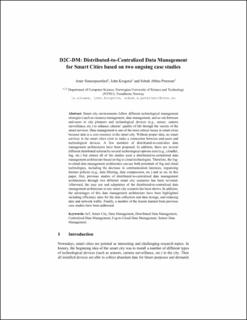| dc.description.abstract | Smart city environments follow different technological management strategies (such as resource management, data management, and so on) between end-users to city planners and technological devices (e.g., sensor, camera surveillance, etc.) to enhance citizens’ quality of life through the variety of the smart services. Data management is one of the most critical issues in smart cities because data is a core resource in the smart city. Without proper data, no smart services in the smart cities exist to make a connection between end-users and technological devices. A few numbers of distributed-to-centralize data management architectures have been proposed. In addition, there are several different distributed schema by several technological options exist (e.g., cloudlet, fog, etc.) but almost all of the studies used a distributed-to-centralized data management architecture based on fog to cloud technologies. Therefore, the fog-to-cloud data management architecture can use both potentials of fog and cloud technologies, including the decrease in communication latencies, organizing distinct policies (e.g., data filtering, data compression, etc.) and so on. In this paper, first, previous studies of distributed-to-centralized data management architectures through two different smart city scenarios have been revisited. Afterward, the easy use and adaptation of the distributed-to-centralized data management architecture to any smart city scenario has been shown. In addition, the advantages of this data management architecture have been highlighted including efficiency rates for the data collection and data storage, and reducing data and network traffic. Finally, a number of the lesson learned from previous case studies has been addressed. | en_US |
